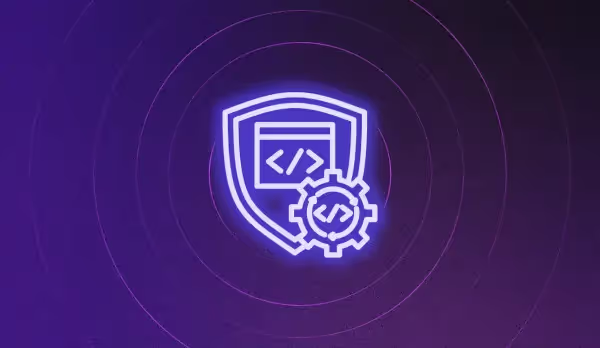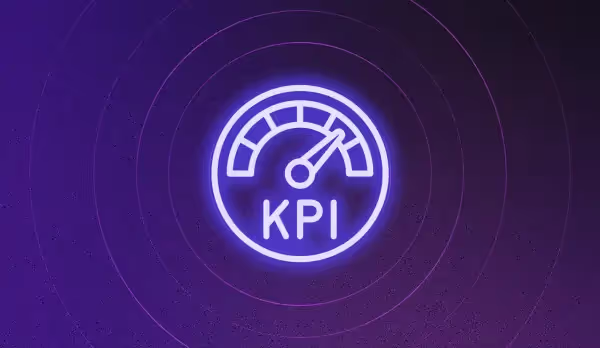Site reliability engineering: What it means for developers and devlops teams

Imagine the impact of Amazon’s systems going down for even a minute.
As much as $220,318.80, according to the latest estimates.
Downtime is a nightmare for ecommerce giants like Apple and Amazon who have lost tens of millions of dollars in revenue. To minimize downtime and improve system reliability and experiences, Google introduced Site Reliability Engineering (SRE) in 2003.
It addressed the challenges of managing large-scale, distributed systems on the cloud. It also aimed at meeting the need for rapid software development cycles with a systematic, engineering-driven approach to operations. Today, SRE is central for developers, devops, and IT operations teams striving to balance rapid innovation with system reliability across industries.
In this post, we’ll explore site reliability engineering, its benefits for developers and devops teams, its focus areas, and the four SRE signals that need to be monitored.
What is site reliability engineering (SRE)?
Site Reliability Engineering (SRE) is the practice of using software tools to automate various IT operations tasks.
This includes product system management, configuration management, security compliance and auditing, resource optimization, and even emergency response that would otherwise be performed manually by system administrators.
The principle behind site reliability engineering is that using software code to automate the oversight and management of large software systems is more sustainable and scalable than relying on manual intervention, especially when those systems extend or migrate to the cloud.
Benefits of SRE for developers and devops teams
Though the impact and focus may slightly differ, SRE offers a suite of benefits to both groups:
Developers
- SRE’s encouragement for developers to integrate patterns like circuit breakers, fallbacks, and retries directly translates into building more resilient applications to failures from the outset.
- By adopting SRE’s focus on defining Service-Level Objectives (SLOs) and Service-Level Indicators (SLIs), developers gain a framework for measuring application performance and become more accountable for their code in production.
- The emphasis on techniques such as performance monitoring and user feedback loops enables developers to continuously fine-tune app responsiveness and user experience.
Devops teams
- SRE’s structured approach to incident management. This is mainly through blameless postmortems, empowering devops teams to dissect and learn from incidents without any blame games. It enhances system reliability and fosters team cohesion over time.
- Site reliability engineering requires rigorous capacity planning and stress testing. It equips devops teams with the foresight to anticipate and prepare for scalability challenges. This prevents over-provisioning and optimizing infrastructure costs.
- SRE provides devops teams with a systematic framework for balancing introducing new features while maintaining system stability. This allows for more informed decision-making regarding when and how to innovate safely.
Five areas of site reliability engineering
Let’s take a look at five facts related to site reliability engineering:
It isn’t just for Google
Although Google pioneered SRE, the discipline is not exclusive to them or limited to large tech companies. In fact, the approach has been widely adopted by businesses of all sizes, especially large enterprises in ecommerce.
SREs are employed by modern developers to ensure their software is reliable for customers. As they get on with SRE, they will need comprehensive error detection, crash reporting, and resolution tools, APM platforms, and real user monitoring. These will allow them to identify and resolve issues, improving the overall quality of their software solutions.
It automates manual tasks
Cloud-native development has created an increasingly distributed environment. This complicates administration, operations, and management, putting much pressure on developers and devops teams.
SRE significantly reduces duplication or redundancy of effort by automating routine tasks, such as capacity planning, account setup, disaster recovery, and access and infrastructure provisioning.
This arrangement enables building applications as microservices and deploying them in containers, which boosts operational efficiency and reduces the risk of failure.
For instance, if an online media streaming service provider wants to handle sudden spikes in site traffic during high-profile event broadcasts, SRE methodologies can automate incident response and system scaling processes to avoid downtime.
It builds tools to support operations
SRE recognizes the limitations of focusing on system uptime in today’s complex, distributed, and highly dynamic cloud environments. Therefore, it advocates for building custom tools that range from monitoring and alerting systems to deployment and incident management tools.
For instance, a cloud services provider could build tools for real-time monitoring and predictive analysis of their infrastructure, enabling it to proactively address potential system bottlenecks and reduce downtime.
It drives the shift-left mindset
The “shift-left” mindset refers to incorporating testing, continuous integration, and continuous delivery in the early stages of the software development lifecycle. It’s a high-level concept that can be implemented in many ways.
For instance, developers may start running performance tests on new code right after they write it, even if it hasn’t yet been integrated into the main codebase. In other cases, they may compile some parts of the codebase to run tests against it before the application goes into production.
It bridges the gap between developers and devops
Unlike traditional devops, which focuses on the culture, practices, and automation necessary to enable seamless software delivery and infrastructure management, SRE brings a more refined set of practices.
For example, site reliability engineering uses SLOs and SLIs to define and measure reliability quantitatively. This ensures that both teams prioritize the aspects of the services that matter most to the end users.
Secondly, error budgets strike the right balance between speed and stability in software engineering. For example, some development and operations teams may want to release new or updated software into production continually. But, if the devops team is not on board with this, SRE sets an error budget determined by the software’s level of risk tolerance. If the number of errors is low, developers can release the new changes.
However, if the errors exceed the permitted budget, the release is put on hold, and the existing problems are solved first. This helps minimize or eliminate much of the friction between both teams.
The signals site reliability engineers should monitor
Four signals help consistently track service health across all apps and infrastructure:
Latency
Latency is the total time it takes for a user to send a request and receive a response.
For example, if an ecommerce web service communicates with a database service on the backend to verify a user, the time taken to execute the database is measured as part of the latency calculation.
High latency can indicate overloaded servers, network issues, or inefficient code. It enables site reliability engineers to detect incidents faster, ensure that applications meet their performance objectives, and provide a good user experience.
Traffic
Traffic measures the volume of requests and responses moving through a network. Depending on the business, the definition of traffic can significantly vary.
For instance, the total number of people coming to an ecommerce site or the number of app requests happening at a given time.
Sudden spikes or drops in traffic can signal potential issues or changes in user behavior. Understanding traffic patterns can help site reliability engineers scale resources accordingly and predict future capacity needs.
Errors
Errors simply refer to the rate of unsuccessful requests. This means site reliability engineers gain insights into the health of the overall software and also the issues occurring at specific service endpoints.
From infrastructure misconfigurations and outages to broken dependencies and flaws in the app code, errors come in many forms. For example, a sudden spike in the error rate might represent a service failure, database, or network outage. High error rates can significantly affect user satisfaction and need immediate attention.
Noibu can help ecommerce site reliability engineers and developers with the automatic detection, prioritization, and resolution of errors. It is an ecommerce health and performance monitoring platform that detects revenue-impacting website errors and flags them in real-time so they can be efficiently resolved without the need for any further investigation or replication.
It even helps developers correlate customer complaints to user sessions and efficiently identify the root cause of errors to reduce error resolution times by up to 70% so your team can instead focus on strategic tasks such as feature releases.
Saturation
Saturation refers to how “full” a service or resource is, measuring the utilization level. System components like hardware disks, memory, and networks often reach a saturation point. This usually happens when the demand surpasses a service’s capacity in the form of memory, CPU, IOPS, or DBS queries.
It’s an important signal a site reliability engineer should monitor because it can predict potential bottlenecks or capacity issues before they result in performance degradation.
The way forward: SRE triggering a cultural shift in development and devops
SRE pushes businesses beyond just making things work. It helps them build strong and stable systems, regardless of what’s thrown at them.
Whether it’s a sudden spike in ecommerce user traffic, an unexpected service outage, or the need to roll out features at lightning speed—SRE can help.
By merging software engineering rigor with operational excellence, SRE compels devops and the development team to ensure that system design, maintenance, and reliability are never compromised.
Large ecommerce businesses need an automated mechanism for error detection and resolution. Hence, they need a platform that goes beyond SRE that detects, analyzes, and puts a dollar value on website errors and bugs. This can help them resolve issues before they hurt the revenue.
If you want to know how Noibu can help, get in touch with our team or sign up for a demo of the platform today.


.avif)

